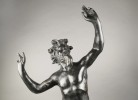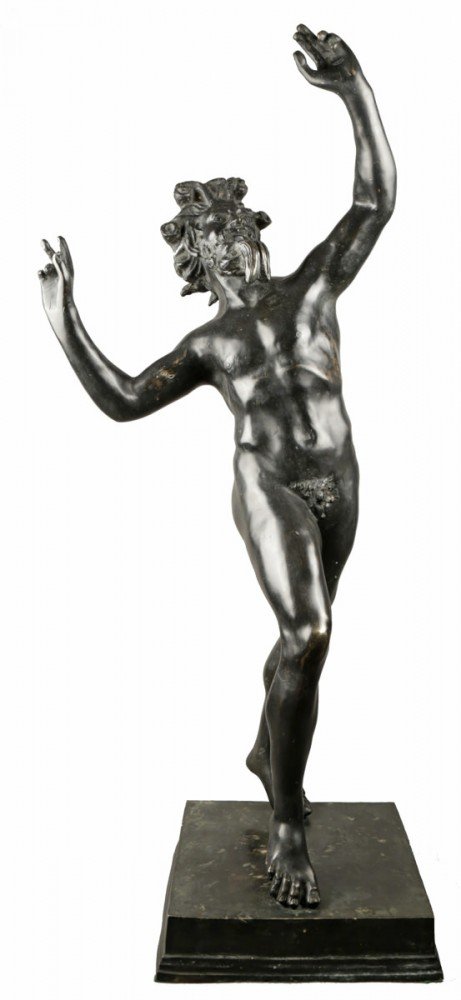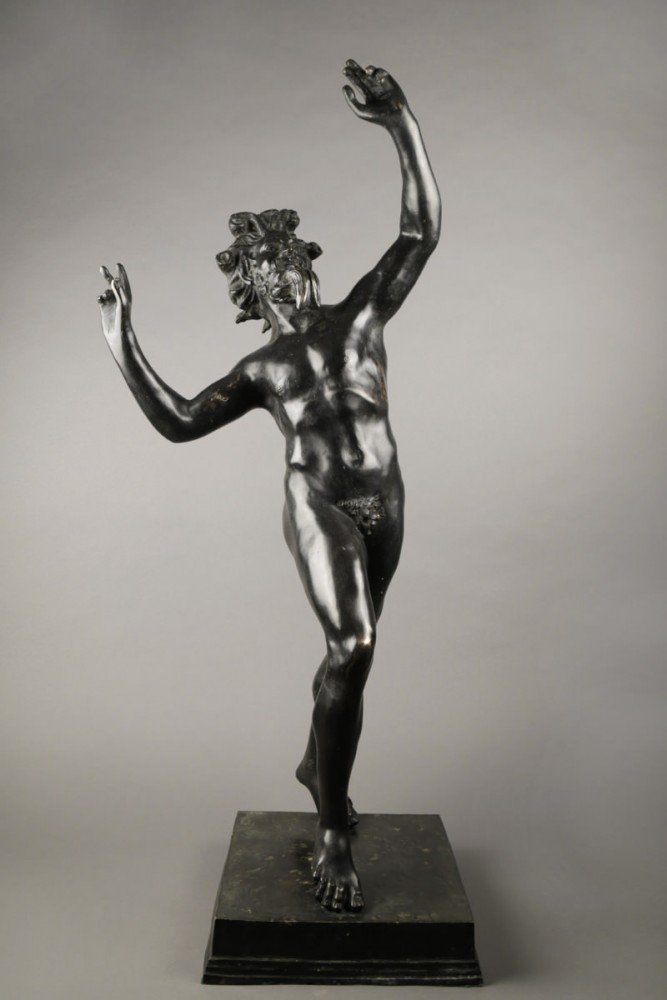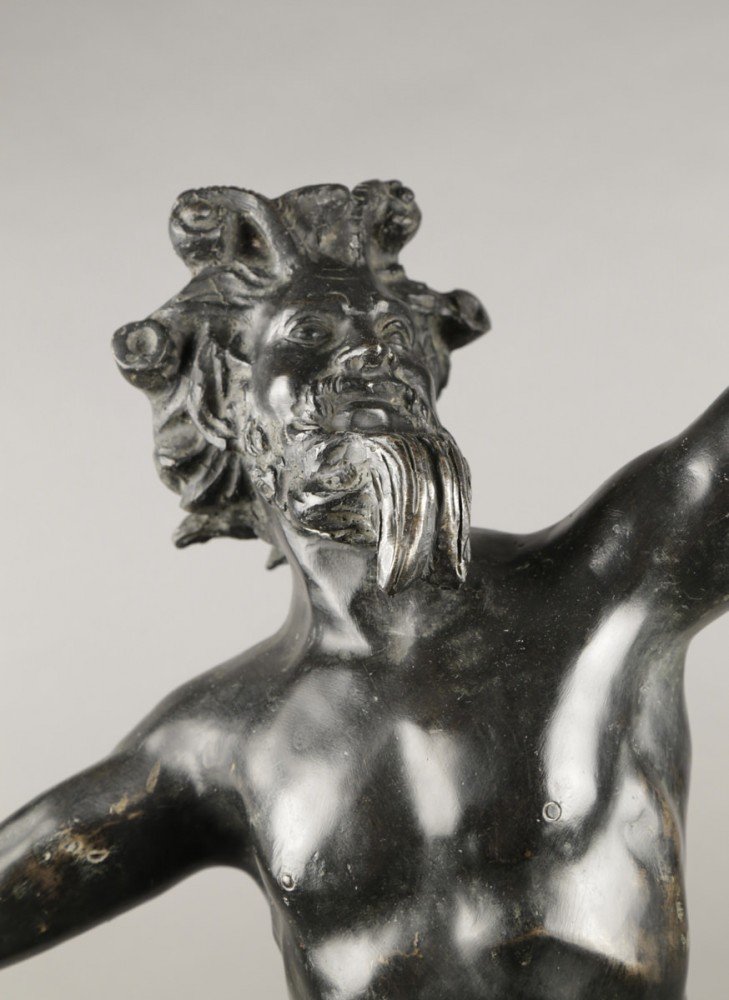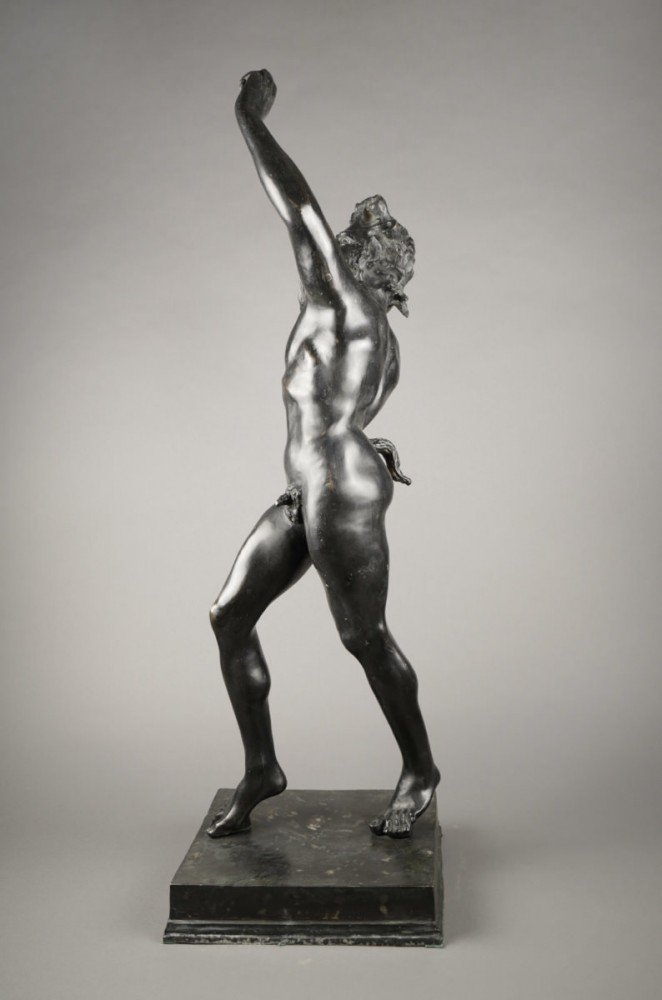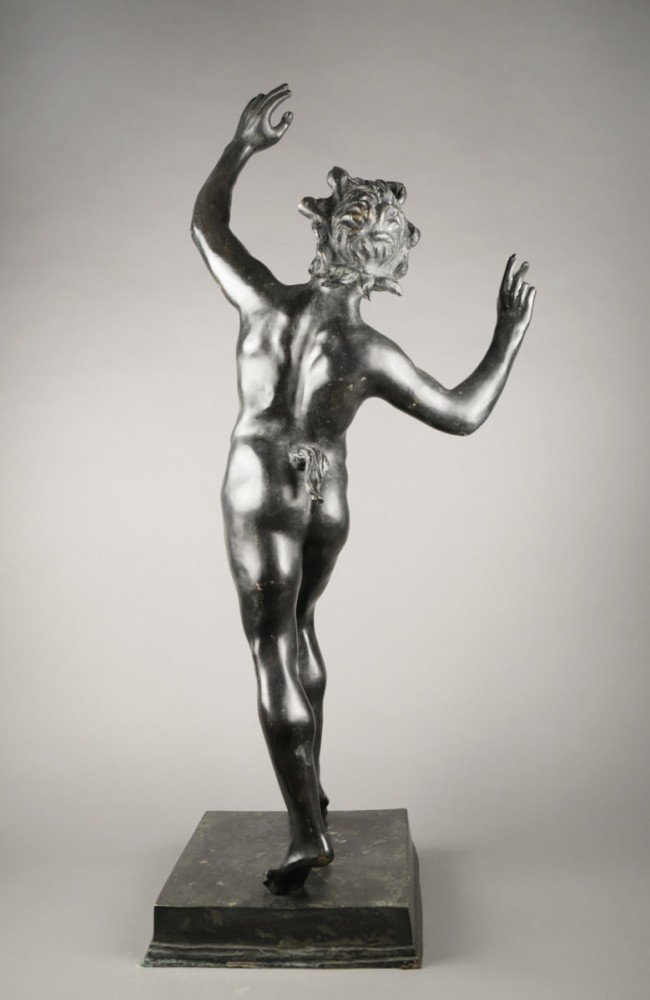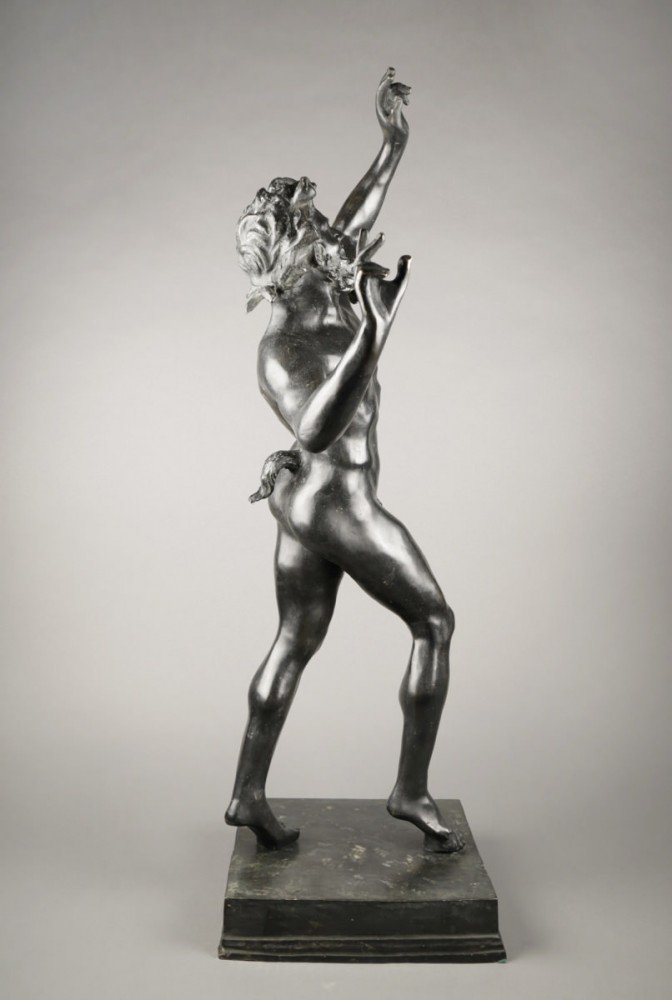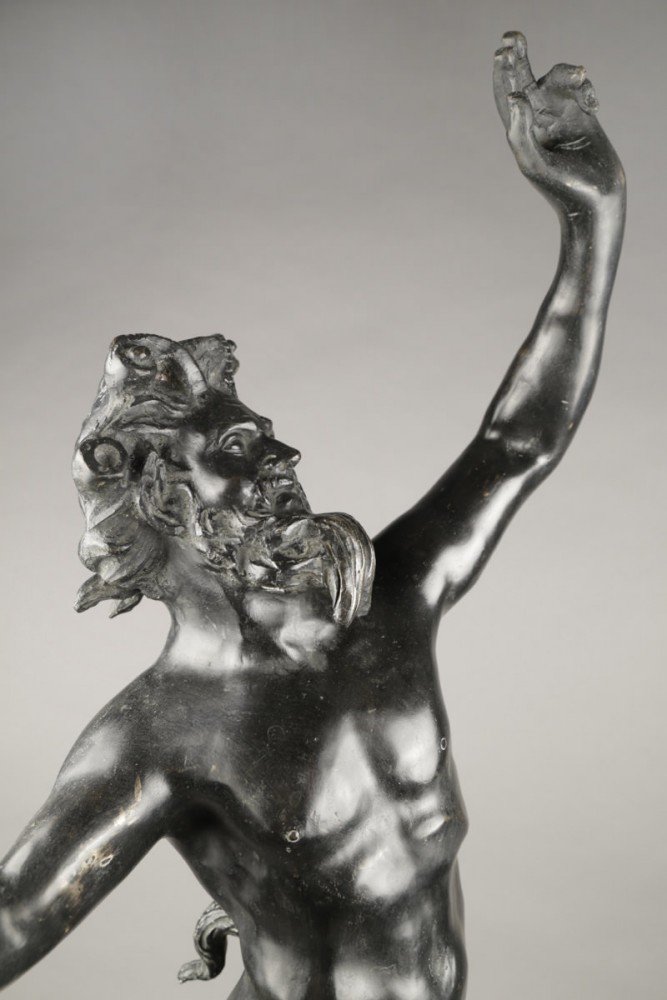Artist: 19th Century Italian School
Medium: bronze
Dimensions: 32in. h x 14in. w x 10in. d
Description:
The Dancing Faun was discovered on October 26, 1830 in the ruins of the most opulent Roman home discovered at Pompeii: the House of the Faun, as it later became known. The Faun is thought to be either a 2nd-century Greek original, or a very high-quality Roman copy.
Upon its discovery, as Francis Haskell and Nicholas Penny write in Taste and the Antique, "The fame of this small bronze was instantaneous ... its first cataloger described it as the finest bronze to have been excavated at Pompeii and compared it to the Barberini Faun."
Its small size made it ideal for reproduction and for decorating gardens and drawing rooms. Victorians raved about the Faun, no doubt with assurances like that from the Naples museum, which advised that "the Faun was ecstatic and not in the intoxicated condition of various other bronze Fauns from Herculaneum and Pompeii…"
Type of Work: Sculpture
Other works by 19th Century Italian School
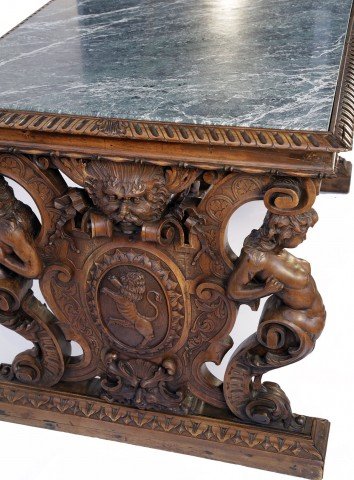
19th Century Italian Renaissance Style Marble Top Library Table 19th Century Italian School
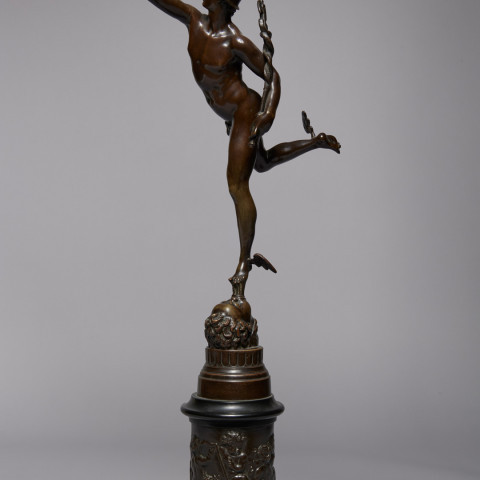
Mercury Standing on the Breath of Zeus 19th Century Italian School
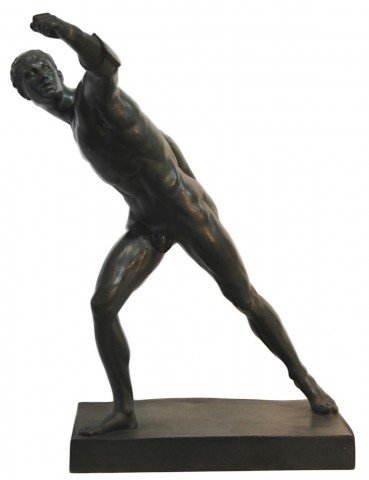
The Borghese Gladiator, c.1810 19th Century Italian School
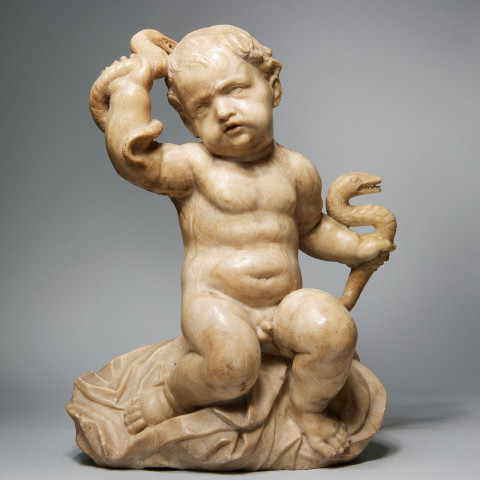
Infant Hercules Wrestling a Snake, 18th/19th Century 19th Century Italian School
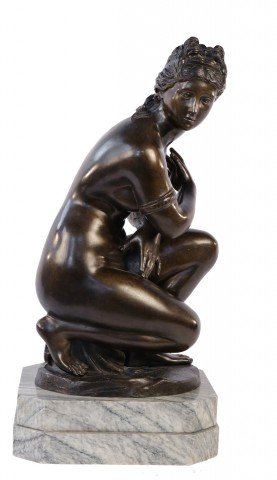
Bronze Figure of Crouching Venus, or The Naked Aphrodite 19th Century Italian School
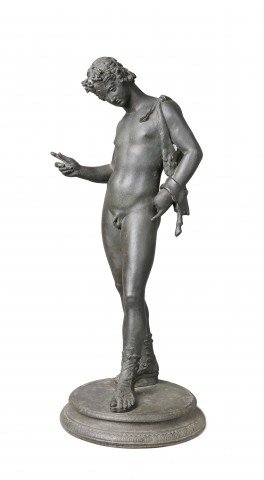
Grand Tour Bronze Sculpture of Dionysus 19th Century Italian School
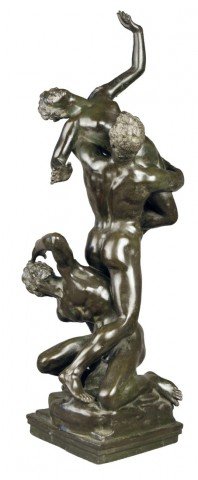
Rape of the Sabine Women, after Giambologna, c.1880 19th Century Italian School
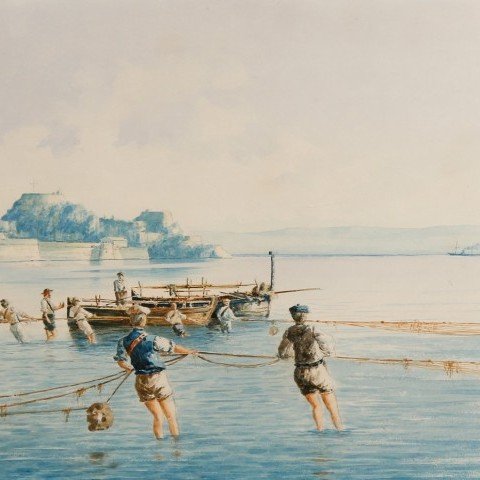
SOLD
Neopolitan Fishing Scene 19th Century Italian School

SOLD
Entrance to The Grand Canal 19th Century Italian School
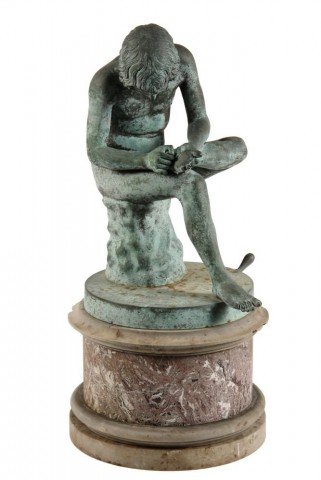
SOLD
Spinario (Boy Pulling a Thorn from his Foot), 1800 19th Century Italian School
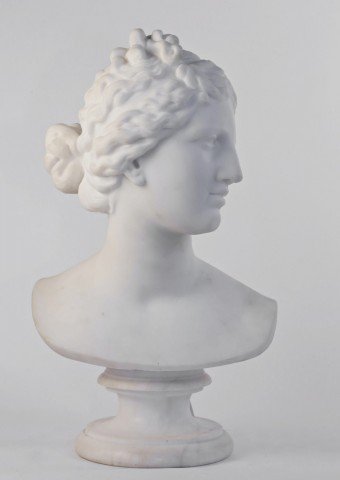
SOLD
Carved Marble Bust of the Goddess Aphrodite 19th Century Italian School
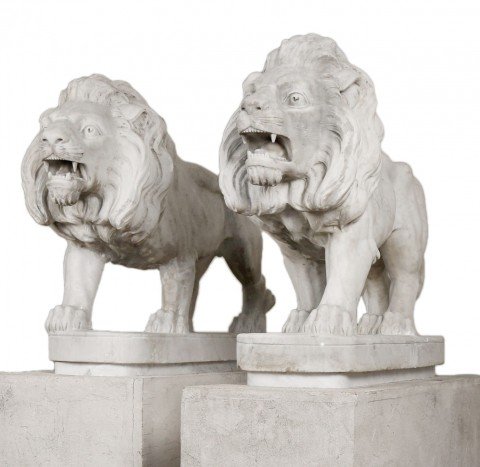
SOLD
Matched Pair of 19thc. Carrara Marble Italian Carved Lions 19th Century Italian School




